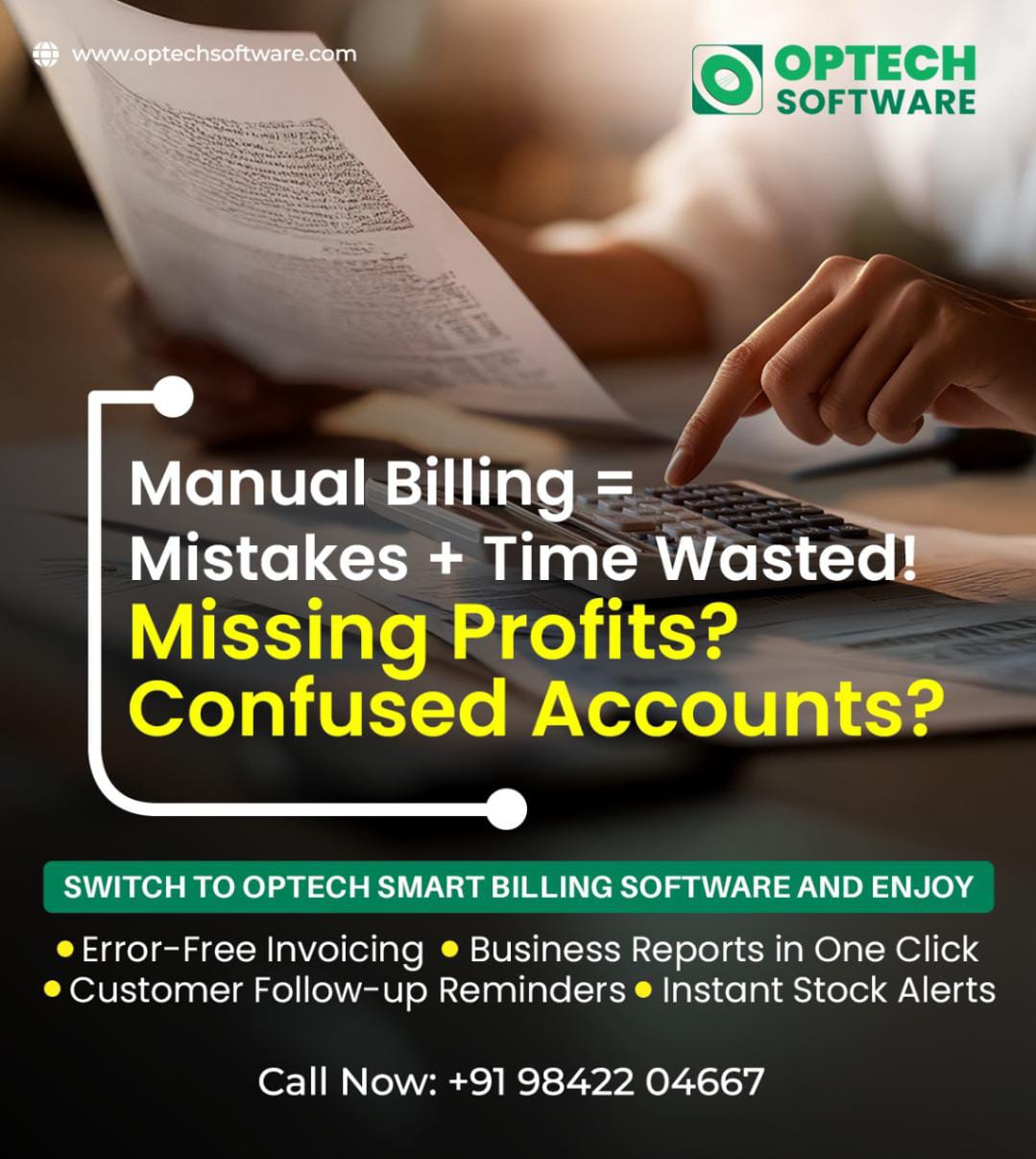Smart Billing Software vs. Traditional Billing: A Detailed Comparison
In today's fast-paced commercial world, skilled invoicing is no longer about registering transactions-it's about accuracy, speed and providing a spontaneous customer experience. Traditional billing methods have been in use in business for decades but with the introduction of smart billing software, certain aspects of invoice generation, management, and tracking are revolutionized. The knowledge on the differences between these two approaches can assist businesses in determining which of the approaches are most suitable to their needs.
1. Understanding the Basics
Traditional Billing:
Traditional billing is performed manually (or semi- manually), thus it necessitates the handwriting of the invoices, excel files or stand-alone accounting software. It may still be used by the small-scale businesses but time consuming as well as subject to human error.
Smart Billing Software:
A technological solution to this is smart billing software that automates the process of issuing invoices, tracking payments, determining taxes and generating reports. It is connected to other systems allowing live updates and enabling businesses to handle their billing anywhere with cloud access.
2. Speed and Efficiency
Traditional Billing:
Preparation of invoices is a time-consuming process when done manually, and particularly where a lot of transactions have to be dealt with. Every process, from calculation to printing, introduces delays in the payment cycle.
Smart Billing Software:
Automated invoices are possible through pre-determined templates and prepared customer information in a matter of seconds. It is faster to use bulk invoicing, auto-calculated taxes, and payment reminders, thus saving valuable time to grow the business.
3. Accuracy and Error Reduction
Traditional Billing:
Manual entry has the disadvantage of creating additional chances of errors, such as the number of decimal points in the wrong place, tax rates being charged at the wrong rate, or duplicate invoices being generated. These errors may cause client relationship problems and payment disputes.
Smart Billing Software:
The use of automated calculations helps in minimizing human error to give precise tax rates, discounts, and totals. Other solutions might flag errors or a lack of data prior to completing an invoice.
4. Cost Considerations
Traditional Billing:
It may appear to be an economical form of business communication, but over a period of time, the time lost to errors, rework, and lack of speed may cost more than paper, stationery, and even simple software.
Smart Billing Software:
Smart systems can be purchased on an up-front basis or a subscription basis, but the savings in labor hours, errors, and payments collected much earlier in the life of the software can pay off the initial cost of the software many times.
4. Cost Considerations
Traditional Billing:
It may appear to be an economical form of business communication, but over a period of time, the time lost to errors, rework, and lack of speed may cost more than paper, stationery, and even simple software.
Smart Billing Software:
Smart systems can be purchased on an up-front basis or a subscription basis, but the savings in labor hours, errors, and payments collected much earlier in the life of the software can pay off the initial cost of the software many times.
5. Accessibility and Flexibility
Traditional Billing:
Physical invoices and locally stored spreadsheets limit accessibility. Retrieving records may involve searching through files, and remote work scenarios become challenging.
Smart Billing Software:
Billing can occur anywhere by any device as it is cloud-based. Businesses are in a position to respond to client requests, issue invoices, and monitor payment in real time, which is ideal for the current mobile-first work culture.
6. Security and Compliance
Traditional Billing:
Paper-based invoices may get lost or destroyed, and unsecured spreadsheets may also face unauthorized access. Modern tax compliance tends to demand more manual verifications.
Smart Billing Software:
High-security cloud space, encryption, and user-grade access give access to sensitive information. Most of the intelligent billing systems are also pre-configured to breakup compliance with local tax policies.
7. Reporting and Insights
Traditional Billing:
Report generation involves the manual compilation and data entry that may be time-consuming and informal. Without the advanced tools, analysis of trends is hard.
Smart Billing Software:
Automated analytics provide real-time views of sales trends, aged accounts receivable, and cash balances. By bringing a real-time dashboard, this enables real-time decision making free of any manual data crunch.
8. Customer Experience
Traditional Billing:
Invoices are often static documents delivered by hand or email attachments. Limited payment options may slow down the process for customers.
Smart Billing Software:
It is possible to issue clients with engaging digital invoices that may contain direct links to the payment solution, various payment options, and immediate results in the form of receipts, which enhances customer satisfaction and promotes an improvement in promptness.
9. Scalability
Traditional Billing:
As business volume increases, manual billing processes become harder to manage, often requiring additional staff or resources.
Smart Billing Software:
The Big transaction volumes are not a problem with these systems. The fact that such features as automated recurring billing and e-commerce, or CRM integration exist means that the scaling process is smooth and cost-effective.
Conclusion
The contest here is between smart and traditional billing software, and the challenge is about speed, precision, versatility, and ultimate efficiency. A traditional billing might be the right fit in limited or low-volume operations, but it cannot work with the modern demands of business. It is the automation in smart billing software, usable in real time and integrating with other aspects of the business, that not only makes the billing process more streamlined but overall helps to scale the business, improve customer satisfaction, and decrease costly inaccuracies. A switch to smart billing can be seen as a business decision rather than an improvement decision; in other words, moving to smart billing becomes a play towards the sustainable prosperity of businesses striving to remain relevant in the age of being digital-first.





